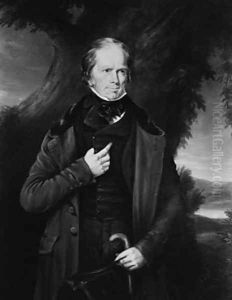Theodore Sidney Moise Paintings
Theodore Sidney Moise was an artist born on September 2, 1808, in Charleston, South Carolina, to a Jewish family. Primarily remembered for his works as a portraitist and painter of horses, Moise developed a regional reputation for his skillful depictions, which were particularly popular among the Southern elite in the United States during the antebellum period.
Despite the lack of comprehensive personal records, it is known that Moise was active and achieved prominence as an artist during the 19th century. His style was characteristic of the period, focusing on realism and detail, which was especially important for his clients who sought to capture the likenesses of themselves and their prized possessions, such as their horses.
Moise's most notable works are his equestrian portraits, which were commissioned by wealthy plantation owners. These paintings often depicted thoroughbred racing horses, which were a status symbol among the Southern aristocracy. His skill in capturing the elegance and power of these animals, as well as the nuances of their riders, made him a sought-after artist for such commissions.
Although the bulk of his career was spent in the South, particularly in Louisiana, Moise also spent time in other parts of the country. He traveled to New York and possibly to Europe, where he would have been exposed to a range of artistic styles and techniques that may have influenced his work. However, his artistic output remains most closely associated with the Southern United States.
Moise lived through a turbulent period in American history, witnessing the Civil War and the subsequent Reconstruction era. How these events affected his career and personal life is not well documented, but it can be surmised that the war and its aftermath likely impacted the demand for his work, given his client base of Southern planters and the economic changes that the war brought about.
Theodore Sidney Moise passed away on November 5, 1885, in New Orleans, Louisiana. While he may not be as widely known as some of his contemporaries, his work provides a valuable glimpse into the culture and society of the American South during his lifetime. His paintings, particularly those of horses, continue to be appreciated for their historical value and artistic merit.
